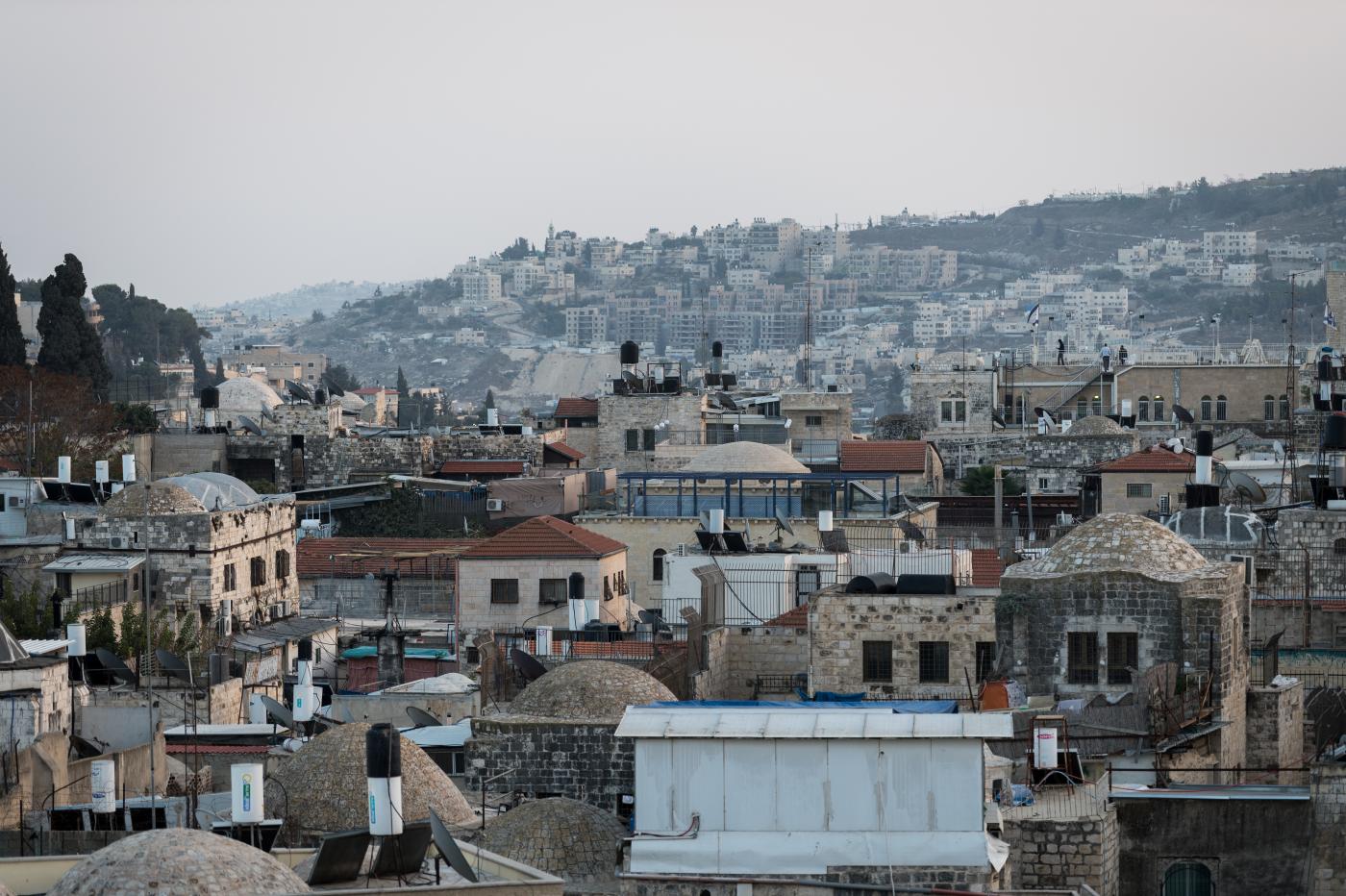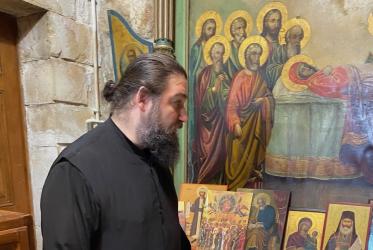Rachel Schwartz is coordinator of International Public Outreach for Ir Amim—translated as “City of Nations” or “City of Peoples”—a nonprofit Israeli organization that focuses on Jerusalem within the context of the Israeli-Palestinian conflict.
Schwartz follows the latest news on settlement developments and their ramifications on human rights and the political future.
She took time to outline where the discrepancies start between Israeli settlements and Palestinian neighborhoods—and it’s back to the process of trying to create a neighborhood in the first place.
That means zoning, Schwartz explained. “You need zoning plans in order to build a neighborhood. I can’t think of any Palestinian neighborhoods that have received updated zoning plans in the past few decades,” she said.
For Palestinians, zoning plans are vastly outdated. “You can’t get building permits for new construction that will accommodate the natural population growth,” she said, adding that, if a Palestinian builds a home without a permit, they open themselves up for home demolitions.
“We even see, just this year, during the first two months of 2023, there have been 55 demolitions in East Jerusalem,” she said. “Twenty-two have been home demolitions and 33 non-residential units—such as storage places or stores.”
In 2022, there were 40,000 housing units advanced for Israelis. Of those, 23,000 were in settlements. On the other hand, 6,000 housing units were advanced for Palestinians, yet they make up 39 percent of the population.
"The numbers are very telling,” said Schwartz. “Look at the land allocated for Palestinians. “Only 8.5 percent of the land allocated is for Palestinians.”
There is a severe housing shortage and lack of services in East Jerusalem. “We also see it regarding living standards and conditions,” said Schwartz. “There are very limited municipal resources allocated to Palestinians in East Jerusalem.”
Who bears the brunt?
Women and children bear the brunt of the inequity.
As of January 2020 there were four public daycare facilities for 40,000 kids in East Jerusalem, as opposed to West Jerusalem, where there are 118 public daycare facilities for 72,000 kids.
There is a difference also between Israeli and Palestinian neighborhoods in terms of women’s roles in the public space.
Among Jewish women, 82% participate in the workforce but among Arab women only 26% percent participate. Their differing roles, combined with the availability or lack of daycare, have a cyclical effect.
"Women get the short end of the stick in all of these issues,” explained Schwartz—particularly when it comes to home demolitions. “Often women are in charge of the homes and they are the ones who need to take care of the children, so they are homemakers with the threat of home demolition. What do you do when your job is a homemaker and you have no home?”
And, from the simplest level, there’s no place for Palestinian children to even play. “There are almost no parks for Palestinian children in East Jerusalem,” explained Schwartz.
The roads are in relatively poor condition in East Jerusalem, and Schwartz added, “don’t even think about sidewalks.” Even trash pickup is much rarer for Palestinian neighborhoods.
Promoting awareness
As news of new settlements rises in the international headlines, Schwartz wants to make people aware of what’s going on behind the scenes.
“Something important to know is that the construction of settlements is a long, complicated, bureaucratic process,” she said. “It’s very technical, it’s very lengthy—and there are countless discussions.”
Until a settlement gets the final approval, it’s very hard to understand what will happen in reality.
Schwartz and her colleagues at Ir Amim regularly mow their way through a complicated bureaucracy, often combing the newspapers for required legal zoning notices.
She worries there’s no way to stop the settlement expansion.
“The only way we found to slow settlement expansion is through international intervention—mobilizing people outside of Israel to get their consulates or embassies to put pressure on Israel,” she said. “People need to understand what will happen if these settlements are built.”
If planned settlements become a reality, it could mean thousands upon thousands who are denied human rights. To reach peace in the city, she said, there needs to be a mutually agreed-upon resolution that safeguards the human and civil rights of both Israelis and Palestinians and upholds the historic religious and political attachment to the city.
“It’s important we understand that a secure and stable life in Jerusalem can only exist where both groups of people can live their daily lives peacefully in this city,” Schwartz said.
So she keeps working to make this vision a reality. “I think I keep it up by thinking of the alternative of not doing this work—it’s that I sit angry with nothing to do,” she said. “This work is very hard—we’re pushing the boulder up the hill and it comes right back.”
But she cannot just let settlements happen and Palestinian rights be wiped out. “I feel like a small cog in a giant machine, she said. “But you have to do something. These are people’s lives and people’s dignity.”
She’s grateful for programmes such as the World Council of Churches Ecumenical Accompaniment Programme for Palestine and Israel (EAPPI). “We have a good history of working together in terms of providing information,” she said. “We meet with EAPPI cohorts to orient them, we provide briefings, and we have representatives of EAPPI speak at our workshops.”
As far as a call to action, Schwartz wants people to stay informed and stay active. “Learn what you can about what’s going on,” she said. “Get information from good sources.”







